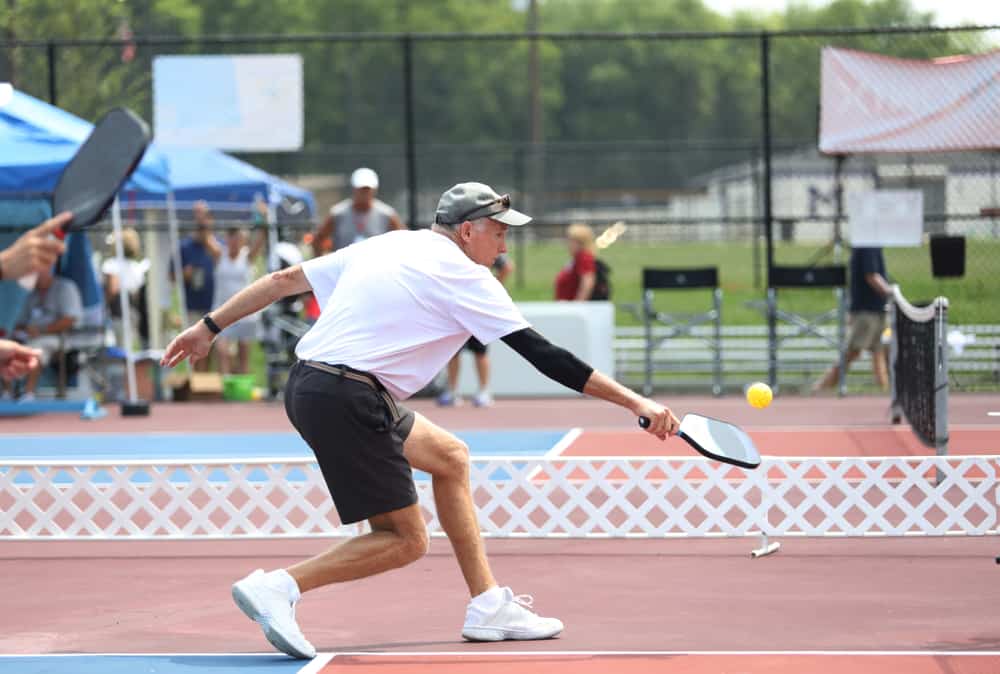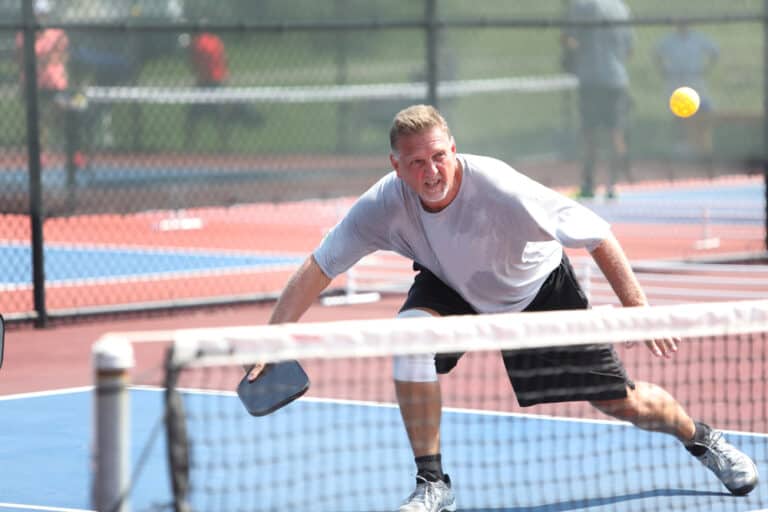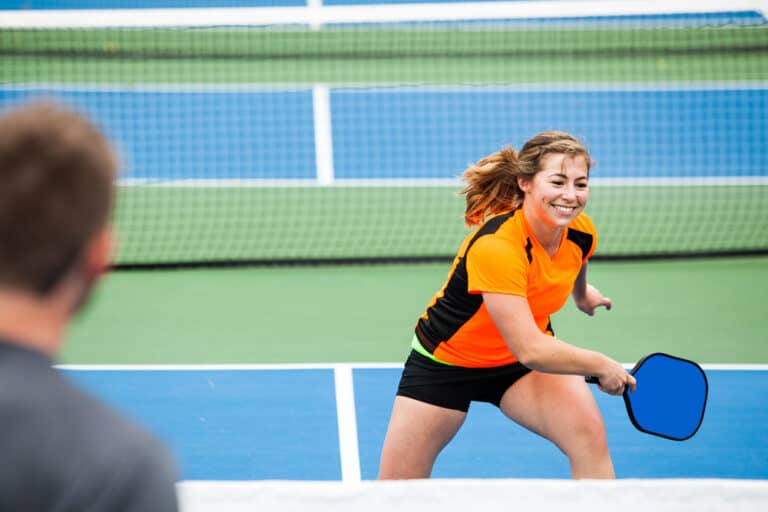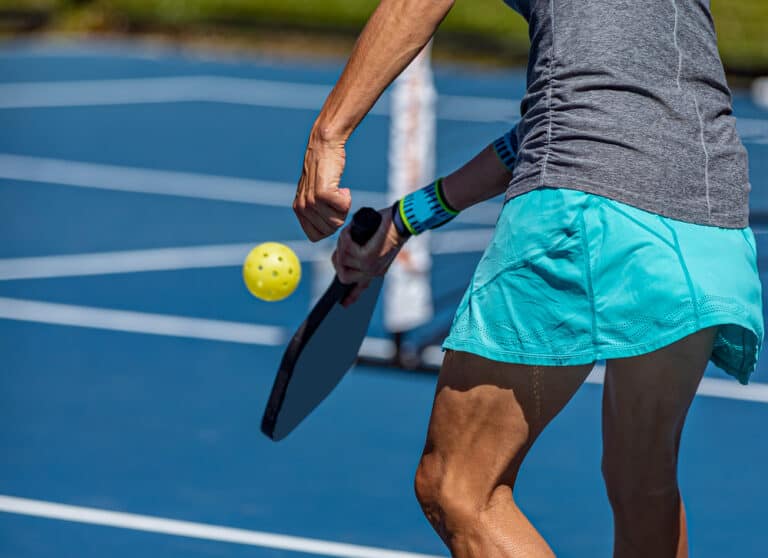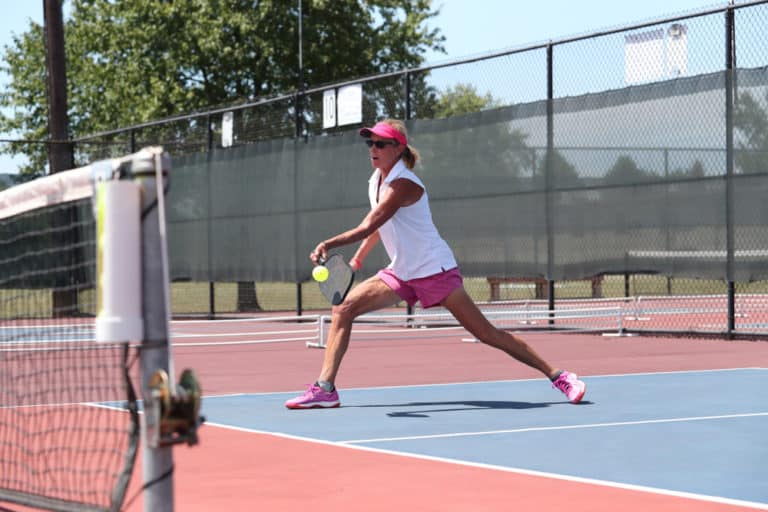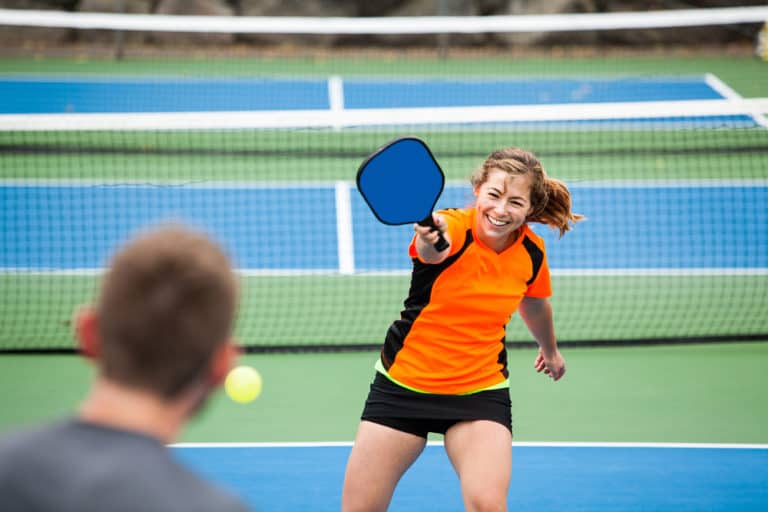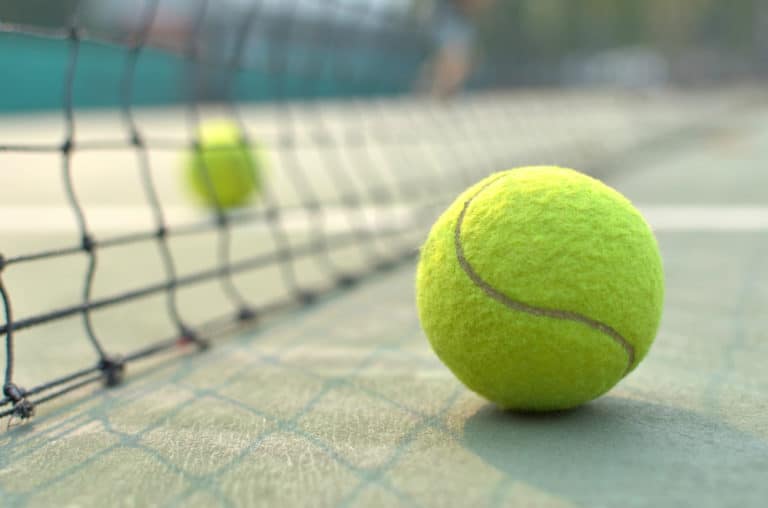Are Double Hits Allowed In Pickleball?
If you are a lover of pickleball who has been participating regularly, you likely know most of the basic rules of the sport. However, even though the game is relatively straightforward, some rules can be a bit confusing, and you may have some level of uncertainty regarding them. One such rule is the allowance of double hits (carries), so are they permitted in pickleball?
Double hits ( and carry hits) are permitted if they occur in a single continuous stroke; this is usually done unintentionally. However, if it is apparent that it was deliberate and not one continuous movement, then it will result in that player or team being penalized with a fault.
On top of this, the ball cannot be hit by a second player, so your teammate may not strike the ball after you to get it over the net to the other side of the court. So we know the basic gist of the rule now, but there is more to it and other aspects of the game we need to divulge, so let us examine this rule of the double hit and see what other regulations we may need to know.
Are Double Hits Permitted In Pickleball?
You may have been on the court or were watching a game and heard the term double hit or carry being used, and one would naturally assume that such an act would not be permitted and result in a fault, but this is not always the case. So before calling a fault for a double hit, understand that if it was part of one continuous motion, then it is legal in pickleball.
To further break down when this is permitted, we can examine various scenarios where this double hit may occur. The double hit must meet all of the following criteria: it must be an unintentional shot that occurs in one continuous motion in a single direction. Only one player may be hitting the ball twice, and surprisingly too is that this rule also applies to serving.
Suppose the double hit does not meet these stipulated conditions, was intentionally done and not in one continuous motion, is multi-directional, and perhaps struck by both players on a team. In that case, it will result in a fault. So be sure that if you execute a double hit, it was accidental, and if you know it was not (and there is no referee), then admit the error.
Evidently, not all double hits are not permissible; however, even something as simple as changing the direction of the strike can lead to a fault being incurred. A similar occurrence to the double hit is the carry, which is when a player ‘carries’ the ball. The definition for this is that the ball is hit in a manner where it does not bounce off the paddle but is instead carried along the surface.
So, for instance, a player might receive the ball and (usually with their back turned so as not to reveal the carry) then allow the ball to land on the paddle and then lob it back over the net. Typically, they will ‘catch’ the ball, change direction, and then play the shot. This is not permitted at all; the ball must bounce off the paddle and may not come to rest on it.
However, there are also times when the player does not intentionally carry the ball. This will either be up to the players to determine or if there is an official referee, they will make the call on whether the ball was carried intentionally.
If you or your opponent(s) believe that the double hit or carry was intentional, then a fault is called. If you were the serving player/team, the other side would win the right to serve. However, if they were serving, they would be awarded a point due to the fault incurred.
What Exactly Is A Double Hit Or Carry, In Pickleball?
Now we know what the rules state regarding the double hit and carry, but what exactly are they, and how do they typically occur; we have touched on this, but let us delve deeper into the ins and outs. So one of the teams or players commits a double hit or carry where they either intentionally or unintentionally strike the ball twice or carry it before it is played back over the net.
What now? Well, in a sport like tennis, or even golf, for that matter, a penalty would be called for hitting the ball twice, even if it was completely unintentional. However, in pickleball, you are given a chance to receive grace for the mistake if it indeed was an accident and you did not intend to commit the error.
However, you must meet the previously stipulated criteria where the double hit occurs during a single, smooth stroke. You have to be swinging the paddle in one direction, and you must transition through the strike and not deviate from your swing when the ball is hit for the second time.
But how and why would a double hit or a carry occur unintentionally in pickleball? The most likely cause is that the individual in question did not have a firm enough grip on their paddle. Or it could be that the way the ball hit the paddle caused instability, and with the following through of the motion, the ball struck the paddle again or stayed on it for even the briefest of moments.
How To Avoid Double Hits In Pickleball
The easiest way to ensure that you do not commit a double hit or carry is to warm up correctly and ensure that you are ready to strike the ball as needed. If you walk onto the court without stretching and warming up, your muscles and joints will not be nimble, and you will also have less power and speed behind your shots.
You are also likely to be less agile, and your reflexes will be slower, increasing the potential for you to make mistakes while playing. When properly warmed up, you tend to feel more comfortable and confident while moving on the court. Also, if you are lethargic, you are more likely to doubt your shots and may falter when trying to hit the ball.
Another way you might commit these errors is if you are playing with injuries; if your wrists, elbows, or shoulders are not in top form, then your technique will be shoddy, and you are more likely to perform inadequately. Rather stay off the court until you have healed up and then head back to getting in the swing of things.
And finally, there is also the equipment side to things; if you are playing with a subpar paddle, then this may well transition into mishaps on the court while playing your shots. Some paddles are less stable and do not offer great ‘sweet spots’. Therefore we would recommend investing in a good quality paddle to decrease your likelihood of inconsistent quality of play.
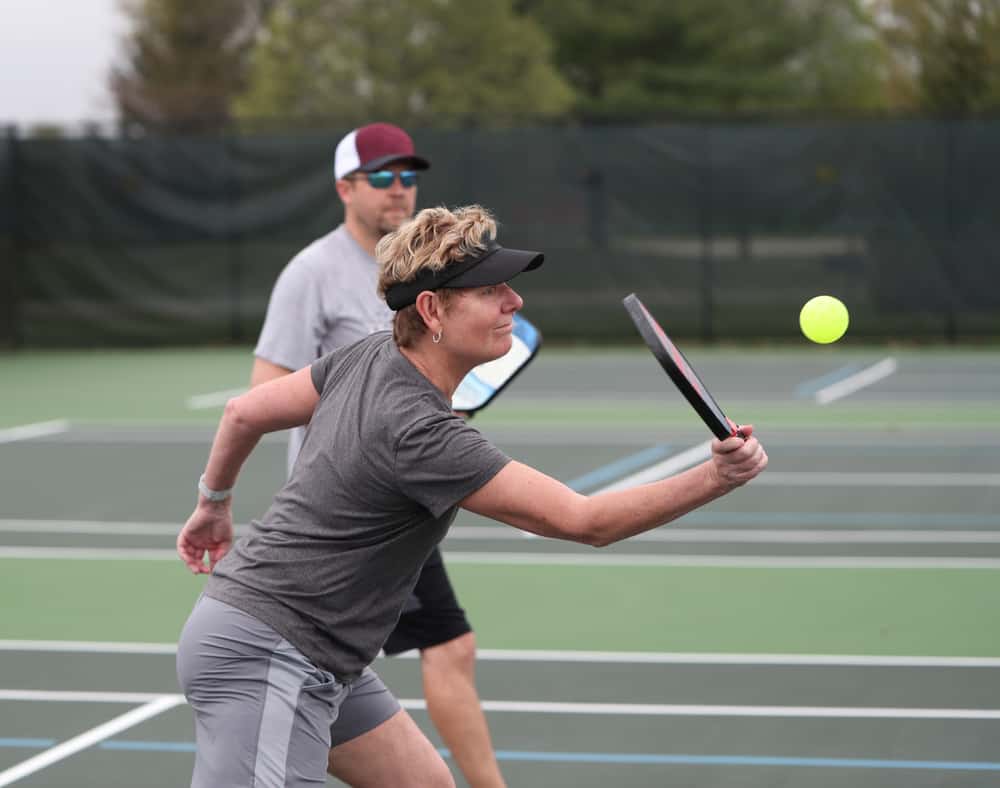
Missing A Shot In Pickleball
If you swing and miss the shot in pickleball, this is not the end of the world, and it does not create a dead ball (a ball that is no longer in play) and unless it has already bounced a second time, on your side of the court, you ought to make another attempt. A fault will only be called if the ball bounces twice before being struck.
Additionally, if you miss the ball and your partner is in range, encourage them to play the shot instead, as this could save you the right to continue serving or ensure that the other team does not receive a point.
We must clarify that if you swing for and miss the ball, that is one thing entirely, but if your paddle nicks the ball and then falls on your side of the court, this will lead to a fault being called. Additionally, if you nick the ball and then hit it again, this will be considered a double hit, and a fault is incurred.
Shots Around The Post In Pickleball
Pickleball is unlike some other sports, such as tennis, where the ball must travel over the net. In pickleball, shots do not have to travel over the net and may travel around the posts in what is referred to as “ATPs”. The pickleball is also allowed to travel below the height of the net. In this case, the sport borrows aspects from table tennis, where the same rules apply.
What Happens If The Ball Hits You In Pickleball?
The double hit and carry rule are just two issues you may face while on the court. Additionally, a problem you may face is that the ball hit harder by a stronger player may come at a speed that catches you off guard and hits you. This is also problematic and will result in a fault; however, as with most rules, there is an exception.
The ball may not hit any part of your body apart from that which is in direct contact with the paddle, meaning that if the ball hits your hand, it will not necessarily result in a fault. It must be below the wrist, though, and this can sometimes be hard to judge, and here again, we see that honesty may come into play.
Injury During A Rally In Pickleball
If you are playing a recreational game, the players will stop playing to assist the injured individual. However, the game will only be stopped at competitive levels once the current rally is complete. So, although forgiving in other areas like the ability to argue against a double hit or carry, this rule is slightly harsher.
Issues With Equipment In Pickleball (During Play)
If there is a problem with equipment, the same rules apply as to a player being injured on the court. If a player breaks their paddle, has their shoelaces come undone, or even loses a hat, the rally continues unless the matter results in a fault. So if you encounter a problem, stay composed and wait until the rally ends.
There are a few ways in which a fault may occur due to the complication, and these are:
- A broken paddle or other item lands in the non-volley zone, and the ball did not yet bounce, meaning the thing in question lands in the non-volley zone due to a volley. This is because you may not enter the non-volley zone with any part of yourself or allow an item to do so if you are volleying.
- A fault will also be received if the item makes contact with any part of the net or lands on your opponents’ side of the court.
- The item distracts or impedes the opponents from playing their shot.
Faults In Pickleball Of Which To Be Aware
We have discussed varying faults thus far, and as you have gathered, a fault is called due to any action preventing play due to a violation of the rules. Below is a comprehensive list of possible reasons that a fault may be called:
- There is a violation of any of the service rules (such as striking the ball above the waist)
- The ball is struck into the net on any occasion, including the serve
- The double bounce rule is not adhered to
- The ball is hit out of bounds
- A player volleys the ball while in (or partially in) the non-volley zone
- The ball bounces more than once before being hit by any receiving player
- The ball hits any part of a player except for their paddle and paddle hand
Conclusion
If you are new to pickleball, we suggest you do further research on the other ins and outs of the game to better your knowledge. If you are a regular player, we hope we have helped clear up any uncertainties you had regarding the double hit, carrying, and other rules. Thankfully, although pickleball has unique rules, most of them are relatively simple to grasp.
If you only play recreationally with friends, you are highly unlikely to have a qualified referee watching over the game. Therefore sometimes, it may come down to the honesty of players regarding whether they intentionally or unintentionally committed the fault in question. So be truthful as to whether you made a mistake and then continue relishing the fun of pickleball.
References
- https://www.cranberrytownship.org/2607/General-Rules-of-the-Game-of-Pickleball#:~:text=Double%2FCarry%20Hits%20%3A%20A%20ball,handed%20shots%20are%20also%20legal.
- https://www.pickleballmax.com/2018/03/hitting-pickleball-twice-double-hit-carry/
- https://thepickler.com/blogs/pickleball-blog/pickleball-rules-advanced
- https://racquetwarrior.com/are-double-hits-allowed-in-pickleball/
- https://pickleballadventure.com/pickleball-rules/#doublehits

